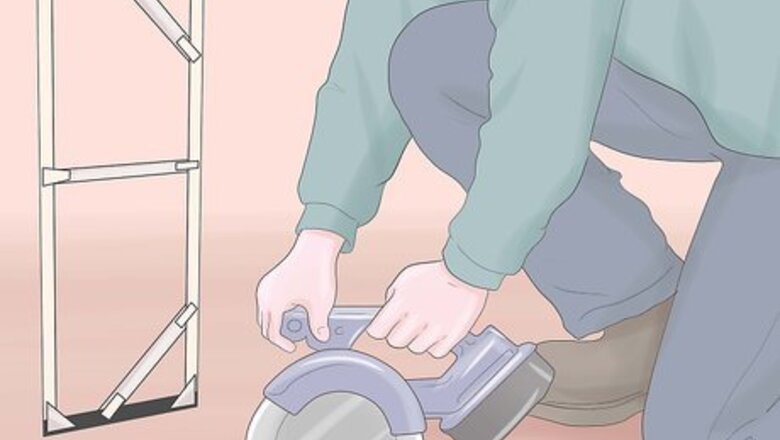
views
- Measure and cut lumber for the frame of the flat. You'll need 2 long pieces for the sides, 2 shorter pieces for the top and bottom, and 3 for the supports.
- Cut 4 triangular plywood pieces for the corners. Assemble the frame by gluing the corner pieces to the wooden planks with wood glue.
- Cover the front of the frame with muslin or canvas. Fold the edges around the frame, and glue it in place. Then, paint the muslin according to your scene.
Broadway Flat
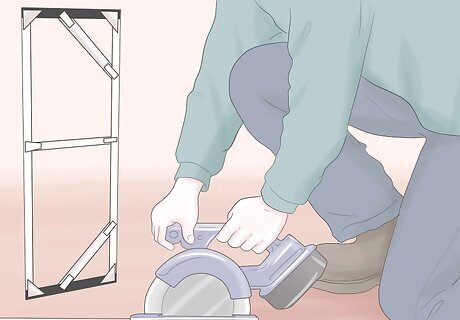
Cut lumber for the rails, which will form the top and bottom of the flat. You need 2 4-foot (1.2 meter) boards from 1-by-3-inch (20 by 65 mm) or 1-by-4-inch (20 by 90 mm) of pine lumber.
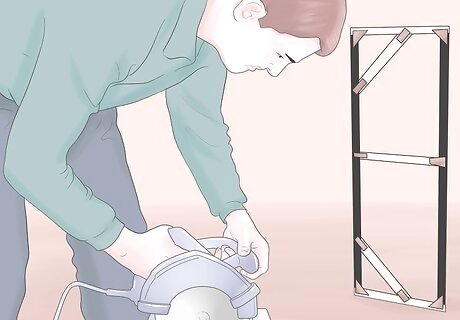
Measure and cut 2 boards to form the sides of the flat, called the stiles. The finished flat will measure 8 feet (2.4) tall. Lumber dimensions refer to the unfinished boards, so 1-by-3-inch lumber actually measures ⁄4 inch (1.9 cm) (19 mm) by 2-1/2 inches (64 mm). And, 1-by-4-inch lumber actually measures ⁄4 inch (1.9 cm) (19 mm) by 3-1/2 inches (89 mm). If you're using 1-by-3-inch lumber, the stiles should be cut to 91 inches (230 cm) (2.31 m); if using 1-by-4-inch lumber, cut the stiles to 89 inches (230 cm) (2.26 m).
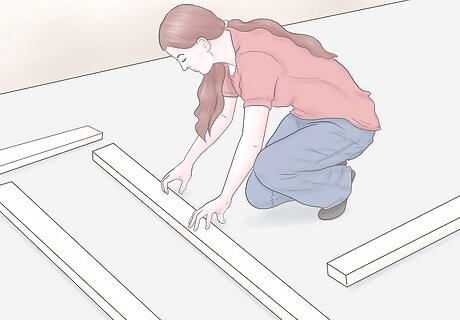
Assemble the boards into a rectangle on the floor of your workspace. Don't attach the boards to one another.
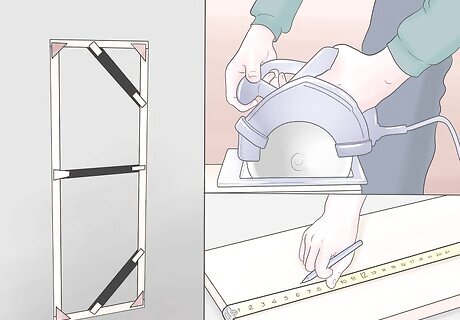
Measure and cut 3 additional boards from the same lumber. One board will become the toggle. Place this inside the frame between the two stiles so it divides the frame into equal top and bottom sections. Two boards will serve as corner braces. Cut these on the miter and place them between the top rail and left stile, and the bottom rail and left stile.
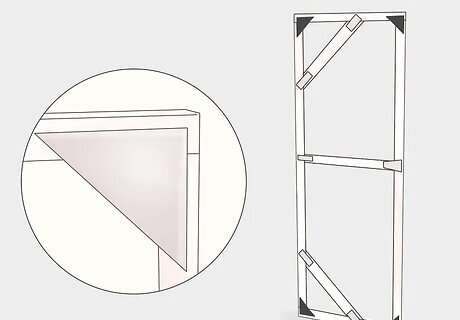
Cut 4 triangular pieces of plywood to serve as corner blocks. Attach them to the 4 corners of the frame, where the rails meet the stiles, with carpenters glue and pneumatic staples.
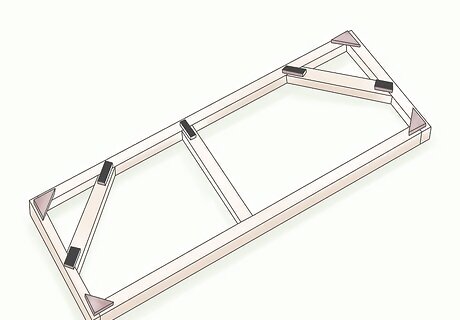
Measure and cut 5 straps from the plywood. Use these to attach the corner braces to the rails and stiles and to attach the left side of the toggle to the left stile. Use glue and staples.
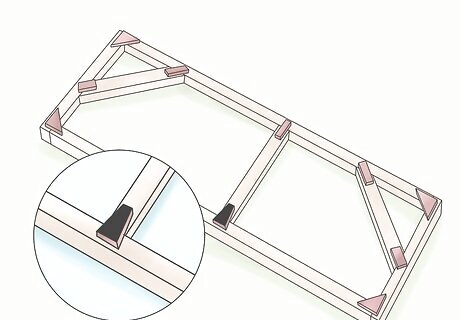
Cut a trapezoidal piece of plywood to be the keystone. Attach this to the right side of the toggle to the right stile with glue and staples.
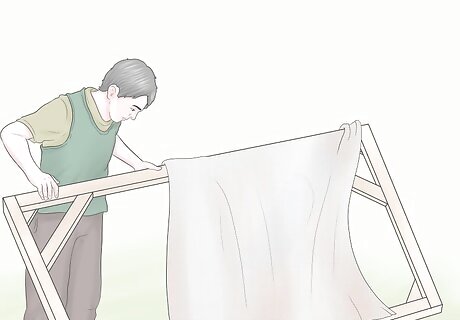
Turn the frame over and cover the front with muslin or canvas. Lay the cloth over the frame and staple it into place along the insides of the rails and stiles.
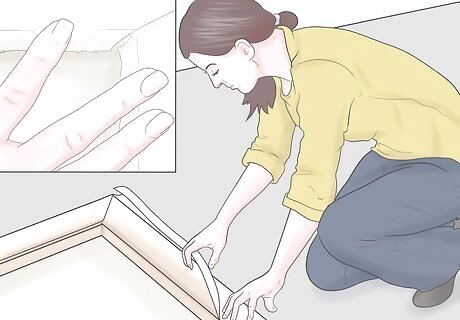
Fold the edges of the cloth back so the rails and stiles are exposed. Paint the boards with thinned carpenter's glue and smooth the edges back do wn.
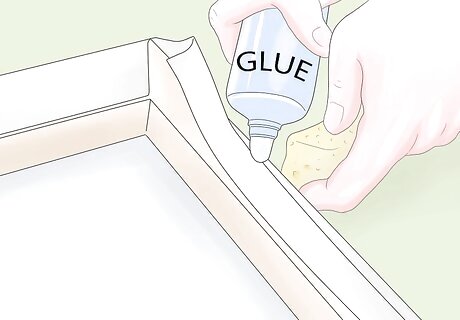
Go over the edges with a damp sponge, let the glue dry, then trim the cloth.
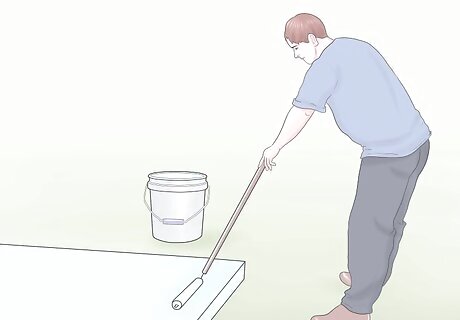
Cover the cloth with a coat of paint to size it. It will stiffen and shrink slightly, becoming taut.
Hollywood Flat
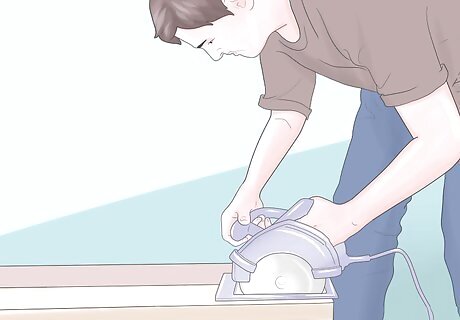
Cut lumber for a frame. Cut 1-by-2-inch (20 by 45 mm) or 1-by-3-inch (20 by 65 mm) pine lumber to create a frame that is 4 feet (1.2 meters) wide and 8 feet (2.4) meters tall. Cut a toggle as well.
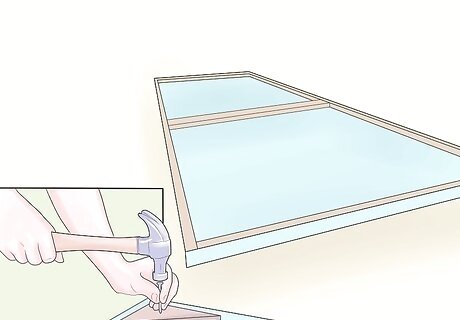
Assemble the frame by nailing the boards together.
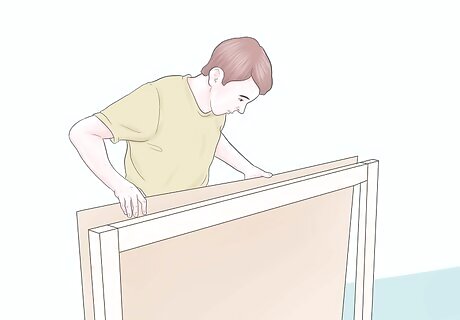
Cover the front with 1/4-inch (6 mm) or 1/8-inch (3 mm) lauan—a thin tropical plywood with a smooth surface that's easy to paint.

















Comments
0 comment